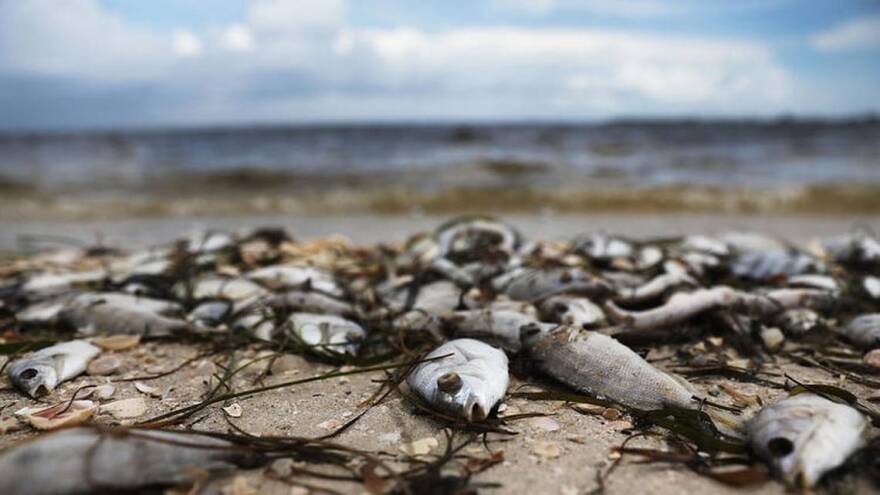Florida is a hot spot for the latest surge of coronavirus cases.
The state accounts for about 20% of new cases in the country. Coronavirus-related hospitalizations in Florida are also on the rise. The majority of the patients are unvaccinated.
WLRN is here for you, even when life is unpredictable. Our journalists are continuing to work hard to keep you informed across South Florida. Please support this vital work. Become a WLRN member today. Thank you.
Chad Neilsen is the director of accreditation and infection prevention for the University of Florida College of Medicine in Jacksonville. The city has become the epicenter for COVID in the state.
“We've seen a triple in the number of COVID-19 admissions into our two hospitals here in Jacksonville,” said Neilsen. “We have far surpassed our previous high private admissions, which we experienced in the winter surge in January. We zoomed past that earlier this week without stopping, cases are pouring into our hospital.”
Neilsen said he’s been hearing from hospitals in Tampa, Orlando and Miami that health care staff are being overwhelmed by this latest COVID wave.
Earlier this week, Gov. Ron DeSantis attributed the uptick in cases to a “seasonal pattern” throughout the Sun Belt.
Florida physicians belonging to the Committee to Protect Health Care, a national organization that strives for equitable health care, held a conference call this week. The Florida lead for the organization, Miami-based cardiologist Dr. Bernard Ashby, said physicians within the group want the state response to the coronavirus to be proactive.
“Our purpose of that press conference was essentially to encourage Governor DeSantis and encourage other policymakers, and municipality leaders, to start being proactive in our planning,” said Ashby. “Let's not be reactive. Yes, we have vaccines. Yes, we're making them more widely available. But that just cannot be your only avenue of trying to deal with this pandemic.”
Red Tide Persists Along Gulf Coast
Fish have been washing up along Tampa Bay’s shoreline for more than a month. Officials in Pinellas County estimate they have collected more than 13,000 tons of dead sea life from the bay.
The culprit behind the mass fish kills is a bloom of red tide, a naturally-occurring toxic algae. Red tide can cause respiratory irritation in humans, but to fish and other marine animals, it can be fatal.
The Gulf Coast usually sees a red tide bloom at least once a year, but this bloom is unusual — the persistence of the bloom, and the early timing of it, is causing concern among Gulf Coast residents and environmentalists.
Many have asked Gov. DeSantis to issue a declaration of emergency to help the region combat red tide.
On Wednesday, DeSantis said the state will offer support to affected communities, but he would not issue the emergency declaration.
“What we have said to the county and the locals is 'What more do you need?' Tell us what you need, and we are happy to help with the resources that we have,” said DeSantis. "Right now, the best thing is to get this cleaned up quickly. That is what we have been told by every expert.”
WUSF's Steve Newborn has been following the red tide outbreak. He said the governor was in Saint Petersburg this week to reassure the community that the state has funds set aside to help with red tide and blue green algae blooms, so a declaration of emergency is not needed.
“And [DeSantis] said that they've already allocated more than $2 million of [the funds] towards the cleanup effort,” Newborn said.
Maya Burke, assistant director of theTampa Bay Estuary Program, said the red tide outbreak is occurring extremely early in the year, reaching into the upper Hillsborough and Tampa Bays in a way that hasn’t been seen since 1971.
“And I think that it's kind of notable to understand that in 1971, that's before we had the wastewater treatment and the stormwater management treatment laws that we have now,” said Burke. “We’re seeing significant nutrient loads to the bay. And so what we saw 50 years ago is really more in line with what we’re seeing this year.”
Burke cited uncommon wind patterns, a dry spring and high salinity levels in Tampa Bay as factors making conditions in the Gulf favorable for this bloom to persist as it has.
Burke said the nutrient-laden water that spilled into Tampa Bay earlier this year from the Piney Point phosphate is another factor.
“That's two hundred tons of nitrogen into lower Tampa Bay that we wouldn't typically see, that was about a year's worth of nitrogen delivered to that bay segment over the course of 10 days,” said Burke. “So we do think that that is part of what caused this bloom to be so intense, unlike anything we've seen for the past 50 years.”



